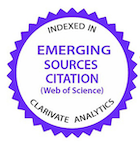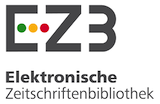Alterações endócrinas em reprodutores suínos de alto desempenho
DOI:
https://doi.org/10.5216/cab.v11i1.1769Palavras-chave:
Comportamento sexual, varrão, libido, hormôniosResumo
Objetivando descrever o comportamento sexual e reprodutivo de machos suínos de alto desempenho, submeteram-se os animais a um protocolo de treinamento para colheita de sêmen, a fim de que fossem incorporados ao plantel de reprodutores do Setor de Suinocultura do Departamento de Zootecnia da UFLA. Submeteram-se os animais a medições de biometria testicular e pesagem para avaliações de desenvolvimento dos testículos e ganho de peso diário (GPD) durante a fase pré-púbere. Após o período de treinamento de colheita de sêmen, foram coletadas amostras de sangue para realização de análises hormonais de testosterona, estradiol, FSH e LH plasmáticos. Observaram-se diferenças nas concentrações de testosterona e estradiol, número médio de saltos diários sobre o manequim e tempo médio de ejaculação. O animal A apresentou um volume de 369,68 mL e 412,67 mL, para o testículo direito e esquerdo, respectivamente, em média oito saltos diários sobre o manequim durante o período de treinamento, e o tempo médio de ejaculação foi de 261 segundos. O animal B não realizou nenhum salto durante o treinamento e apresentou volume testicular direito de 359,76 mL e esquerdo de 315,10 mL. As dosagens hormonais para o animal A foram de 0,0153 ng/mL e 0,7015 ng/mL para testosterona e estradiol, respectivamente. O animal B apresentou concentração plasmática de testosterona de 0,0011 ng/mL e 0,0241 ng/mL de estradiol. As concentrações de FSH e LH foram semelhantes entre os animais, sendo 0,10 mU/mL e 0,10 U/L, respectivamente. Essas diferenças observadas possivelmente determinaram o comportamento sexual diferenciado dos machos durante o período de treinamento e colheita de sêmen.PALAVRAS-CHAVES: Comportamento sexual, hormônios, libido, varrão.
Downloads
Não há dados estatísticos.
Publicado
2010-04-01
Como Citar
OBERLENDER, Guilherme; MURGAS, Luis David Solis; LIMA, Daniele de; GAGGINI, Thais Schwarz; ZANGERONIMO, Márcio Gilberto; ALVARENGA, Ana Luisa Neves; SILVA, Daiane Moreira. Alterações endócrinas em reprodutores suínos de alto desempenho. Ciência Animal Brasileira / Brazilian Animal Science, Goiânia, v. 11, n. 1, p. 245–250, 2010. DOI: 10.5216/cab.v11i1.1769. Disponível em: https://revistas.ufg.br/vet/article/view/1769. Acesso em: 5 dez. 2025.
Edição
Seção
Relato de caso
Licença
Copyright (c) 2010 Ciência Animal Brasileira / Brazilian Animal Science

Este trabalho está licenciado sob uma licença Creative Commons Attribution 4.0 International License.
Autores que publicam nesta revista concordam com os seguintes termos:
- Autores mantém os direitos autorais e concedem à revista o direito de primeira publicação, com o trabalho simultaneamente licenciado sob a Licença Creative Commons Attribution que permite o compartilhamento do trabalho com reconhecimento da autoria e publicação inicial nesta revista.
- Autores têm autorização para assumir contratos adicionais separadamente, para distribuição não-exclusiva da versão do trabalho publicada nesta revista (ex.: publicar em repositório institucional ou como capítulo de livro), com reconhecimento de autoria e publicação inicial nesta revista.
- Autores têm permissão e são estimulados a publicar e distribuir seu trabalho online (ex.: em repositórios institucionais ou na sua página pessoal) a qualquer ponto antes ou durante o processo editorial, já que isso pode gerar alterações produtivas, bem como aumentar o impacto e a citação do trabalho publicado (Veja O Efeito do Acesso Livre).






























